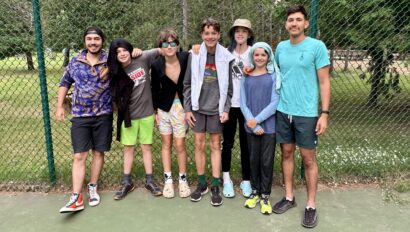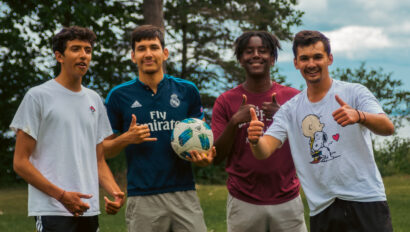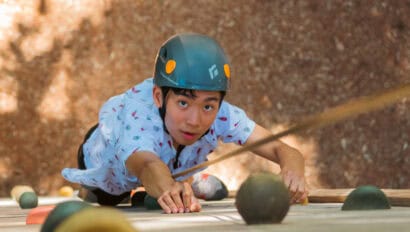Overview
Camp Chippewa’s location is unparalleled. We are nestled in between two beautiful clean lakes (Cass and Buck) and run a multitude of water-based activities; with swimming being the most important one. Whether it’s canoeing (both in camp and on trips up to 21 days in length), kayaking, stand-up paddleboarding, sailing, swimming, waterskiing, morning/evening dips, free swims, fishing, or various special day activities, we spend A LOT of time in or around the water.
Water-based activities are inherently a risk and knowing how to be safe and comfortable in the water is a must for all campers. Just like how a Lifeguarding/First Aid/CPR certification is a requirement to be on staff, swimming is a mandatory activity for campers. Every camper that comes to Chippewa will be swimming!

Teaching
Like I said above, every camper is required to sign up for swimming (with one exception that I will mention later). Some campers may come to Chippewa with no swimming experience, and some may swim competitively at home – that is totally okay! We want to improve everyone’s ability so that we are all more comfortable around the water. Everyone will take a swim test in the first few days of arrival and then be divided into ‘levels’ based on their skills and comfort in the water. We utilize the American Red Cross program to make sure campers are receiving the highest level of instruction.
Compared to all other activities, swimming has the most staff assigned to the period – it is imperative that we have proper supervision to make keep everyone safe. At swimming periods, staff will be working with smaller groups of campers to work on their swimming skills, their diving skills, and even their water-safety-related skills. Staff will be in the water with the kids to either demonstrate or help hone strokes. None of these are ‘one and done’. Repetition is key in retaining information, so campers will be tested and quizzed many times to make sure they nail the skill being taught

Ranks
American Red Cross divides their swimming programs into six different levels, though we only focus on Levels 3, 4, and 5 at camp. Levels 1 and 2 are very basic and focused on water comfort and rudimentary swimming skills (note that we do not have activity periods set aside to teach Levels 1 and 2 but will absolutely fall back on their principles should the need arise for a camper). Level 3, 4, and 5 are the primary focus at Chippewa: Level 3 teaches stroke development, Level 4 teaches stroke improvement, and Level 5 teaches stroke refinement. Level 6 is about swimming and skill proficiency and allows swimmers to focus on more advanced techniques and swimming over greater distances (we do not have an ‘American Red Cross Level 6’ course at Chippewa, but we do something after Level 5: more on this later).
We have skills checklists and stroke performance charts to track what skills each camper needs and what a proper front crawl, breaststroke, elementary backstroke, and sidestroke (and even butterfly in later levels) looks like to pass out of their level. Once a swimming counselor feels that all requirements are met, a camper will move onto the next level! Swimming is not easy and sometimes you can be at the same level for multiple years, but don’t get discouraged! Every time you come down to Buck Lake, your skills improve.
After Level 5, campers will move into the ‘mileage’ period. If you then manage to swim a total of five miles during one session at camp, then swimming is no longer mandatary; you can sign up for a fifth period of your choice! This is an awesome incentive for a camper to try their hardest during each swim lesson.
To reiterate everything, swimming is extremely important at Camp Chippewa. There is a lot of information being taught, and that’s because we want everyone to be safe so we can all enjoy a free swim at Cass Lake, a dive off the high dive at Buck Lake, or an icy cold dip in Hudson Bay of the Arctic Ocean.
-Will Norris



